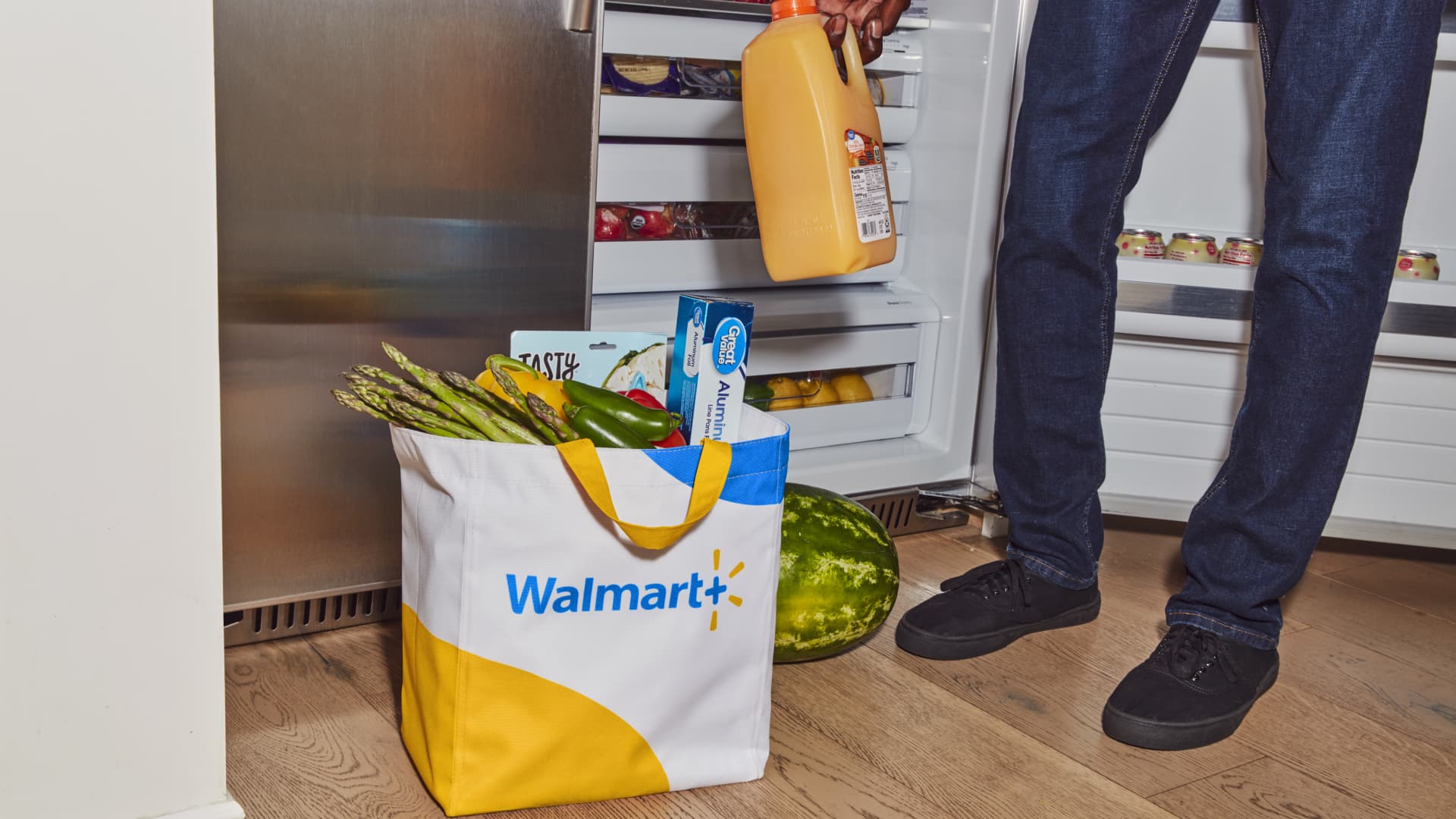Who needs another subscription service? Walmart is betting its millions of customers do

Americans have tons of subscriptions.
Even with inflation, Walmart thinks they’re willing to pay for one more.
Walmart’s subscription service is Walmart+. The program includes benefits such as free shipping for online purchases, free deliveries from the store and gas discounts. It debuted in September 2020, a time when many shoppers were trying to avoid stores because of Covid-19.
Two years later, the retailer faces a very different backdrop. Walmart’s e-commerce growth rate has slowed. More shoppers have returned to stores and more are skipping discretionary purchases as they spend more on food, rent and other necessities.
Now, Walmart will have to prove its subscription service can grow in a tougher climate.
Chris Cracchiolo, head of Walmart+, said sign-ups and renewals for the service have remained steady in recent months. The service’s members tend to be younger, more tech-savvy and more affluent than the typical Walmart shopper.
Yet he said Walmart+ has attracted many budget-constrained consumers, too: About 1 in 4 Walmart+ members receive government-provided food assistance benefits.
Those demographics could be a promising sign for Walmart+ as it navigates a segment that’s rapidly sorting winners from losers.
Sea of subscriptions
Some subscription services are struggling to retain customers. Netflix and personal styling service Stitch Fix are among the companies that have lost customers. At the same time, club memberships have gained momentum. Costco has continued to draw new members, and Walmart-owned Sam’s Club has reported record-high membership. Sam’s Club does not disclose its membership count.
The company believes Walmart+ is more like a club membership, which shoppers use to stock up on essential items, than a streaming service that subscribers may drop after a favorite show’s season ends and then renew when the series returns.
Cracchiolo, an American Express veteran, said Walmart+ is positioned to grow even in a time when Americans have tighter budgets and weigh the risk of a recession.
The big-box retailer is leaning into value-oriented perks as inflation is at near four-decade highs. Those include steeper gas discounts and new digital coupons, which skew Walmart+ toward the club category. In August, it added Walmart Rewards, a program exclusive to Walmart+ members that allows them to save money on items and apply those savings toward future purchases. Then, in September, members began getting free access to Paramount+.
It already included grocery benefits, such as free home delivery for orders of $35 or more.
Even before inflation pressured wallets, some market research firms pointed to Walmart+’s slow membership gains, especially compared with competitor Amazon Prime.
The membership count for Walmart+ has hovered around 11 million to 11.5 million in the past three quarters, according to estimates by market researcher Consumer Intelligence Research Partners based on quarterly consumer surveys and industry research. That translates to about 25% of Walmart’s online shoppers.
Amazon Prime, which debuted in 2005, counts an estimated 168 million members in the U.S. as of June 30, according to CIRP. Roughly 70% of its online shoppers are members, according to estimates by the firm.
Walmart has not disclosed a subscriber count. However, its leaders said on a recent earnings call that Walmart+ has added paying members to the program every month since the September 2020 launch.
‘This is when we step up’
Walmart may dangle more benefits this holiday season, too — such as early and exclusive access to hot items like video game consoles. The company has not announced its Walmart+ holiday plans, but last year it gave Walmart+ members first dibs on deals.
The retailer has momentum in broadening its customer base: Walmart’s discounter reputation has drawn higher-income shoppers in recent months. About three-quarters of Walmart’s grocery market share gains came from customers with annual household incomes of $100,000 or more in the quarter ended July 31.
That dynamic will boost Walmart+ membership too, Cracchiolo said.
“This is the time when Walmart shines,” he said. “This is what we do best. When there’s uncertainty, when there’s inflation, when customers are on really, really tight budgets. This is when we step up. And Walmart+ membership is that on steroids. What we’re seeing is more customers actually seeing the need.”
He said busy families are the core demographic for Walmart+ — a profile that fits approximately 50 million households in the U.S. Customers who are part of the program spend about twice as much as nonmembers, he added. Plus, it makes money from the subscription fees. Members pay $12.95 a month or $98 on an annual basis.
Its members fill up bigger baskets, visit its stores and website more frequently and shop across more departments, he said.
“For us, it’s about developing a relationship with a customer where it’s not just a transaction,” he said. “The more we can offer customers that help them in their everyday lives, the more we build that emotional connection with the customer.”




